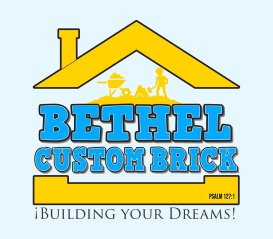Repairing a historical chimney is about more than just fixing structural issues—it’s about preserving the character, authenticity, and historical value of the property. One of the most critical aspects of this process is using period-appropriate materials. These materials ensure that repairs not only restore functionality but also blend seamlessly with the original construction, maintaining the chimney’s architectural integrity and charm.
Here’s why using period-appropriate materials is essential for historical chimney repairs and how to approach this meticulous process.
Why Period-Appropriate Materials Matter
1. Preserving Architectural Authenticity:
- Historical chimneys are often key architectural features of older homes, showcasing craftsmanship and materials unique to their era.
- Using modern materials that don’t match the original can disrupt the chimney’s appearance and detract from the home’s historical value.
2. Maintaining Structural Integrity:
- Many older chimneys were built with specific materials like lime mortar and handmade bricks. Modern substitutes may not interact well with these materials, leading to further damage.
- Period-appropriate materials ensure compatibility and long-term stability.
3. Complying with Preservation Guidelines:
- Homes designated as historical landmarks often require repairs to adhere to strict preservation guidelines.
- Using authentic materials helps ensure compliance and protects the home’s historical status.
4. Enhancing Property Value:
- A properly restored chimney that maintains its historical authenticity can increase the property’s appeal and value, particularly to buyers interested in historical homes.
Common Materials Used in Historical Chimneys
1. Handmade Bricks:
- Characteristics: Handmade bricks have irregular shapes, textures, and colors that reflect the time period of their construction.
- Replacement: Reclaimed bricks or custom-fabricated ones can replicate the look and feel of the original materials.
2. Lime Mortar:
- Characteristics: Unlike modern Portland cement, lime mortar is flexible and breathable, making it ideal for historical masonry.
- Replacement: Matching the mortar’s composition and color is essential for both aesthetics and compatibility.
3. Terra Cotta or Clay Flue Liners:
- Characteristics: Older chimneys often used terra cotta or clay liners, which are durable but prone to cracking over time.
- Replacement: Modern replacements may include high-quality replicas or new liners designed to blend with the original materials.
4. Natural Stone:
- Characteristics: Some historical chimneys feature stone elements, such as corbels or decorative caps.
- Replacement: Repaired or replaced using stone from quarries that provide similar textures and colors.
Challenges in Sourcing Period-Appropriate Materials
1. Finding Matching Materials:
- Many older materials are no longer manufactured, making it necessary to source reclaimed bricks, mortar, or stone.
- Custom fabrication may be required to replicate unique features.
2. Ensuring Material Compatibility:
- Mixing modern materials with older ones can cause damage, such as cracking or spalling.
- Professionals must carefully assess the chimney’s construction to ensure new materials work harmoniously with the old.
3. Balancing Costs and Authenticity:
- Authentic materials may be more expensive, but they ensure the chimney’s restoration aligns with its original design.
- Balancing budget constraints with preservation goals is a key consideration.
Steps in Historical Chimney Repairs Using Period-Appropriate Materials
1. Assessment and Documentation:
- Inspect the chimney to evaluate damage and determine the materials originally used.
- Document the chimney’s features, such as patterns, colors, and dimensions, to guide the repair process.
2. Material Sourcing:
- Source reclaimed or custom-fabricated bricks, mortar, and other materials that match the original construction.
3. Repairing or Replacing Damaged Elements:
- Replace spalled bricks, eroded mortar, and cracked liners with period-appropriate alternatives.
4. Blending Repairs with Existing Masonry:
- Carefully integrate new materials into the existing structure to ensure seamless repairs.
5. Preserving Decorative Features:
- Restore or replicate architectural details like corbels, crowns, and patterns to maintain the chimney’s historical character.
Tips for Maintaining a Restored Historical Chimney
- Schedule Regular Inspections: Annual inspections help identify wear and prevent damage to restored chimneys.
- Reapply Waterproofing: Protect the masonry from moisture damage with breathable waterproofing treatments.
- Clean the Chimney Safely: Use professional services to avoid damaging fragile historical materials.
- Monitor Weather Impact: Check for cracks or spalling after storms or freeze-thaw cycles.
Bethel Custom Brick – Experts in Historical Chimney Repairs
At Bethel Custom Brick, we specialize in restoring historical chimneys with period-appropriate materials and expert craftsmanship. Serving the Detroit Metro area, our team ensures that every repair preserves the original character and meets modern safety standards. Contact us today to schedule an inspection and let us help protect the beauty and heritage of your historical home.


